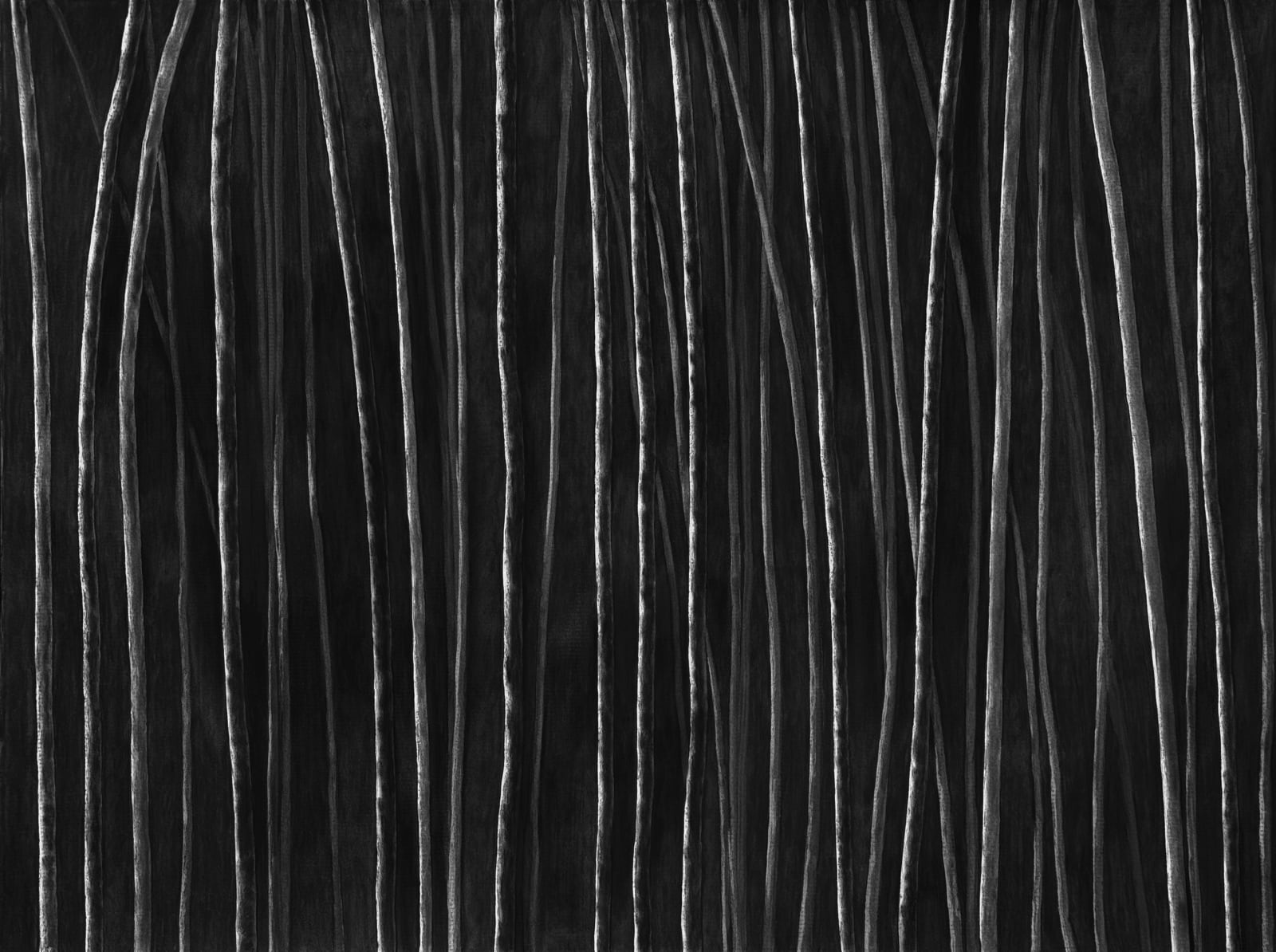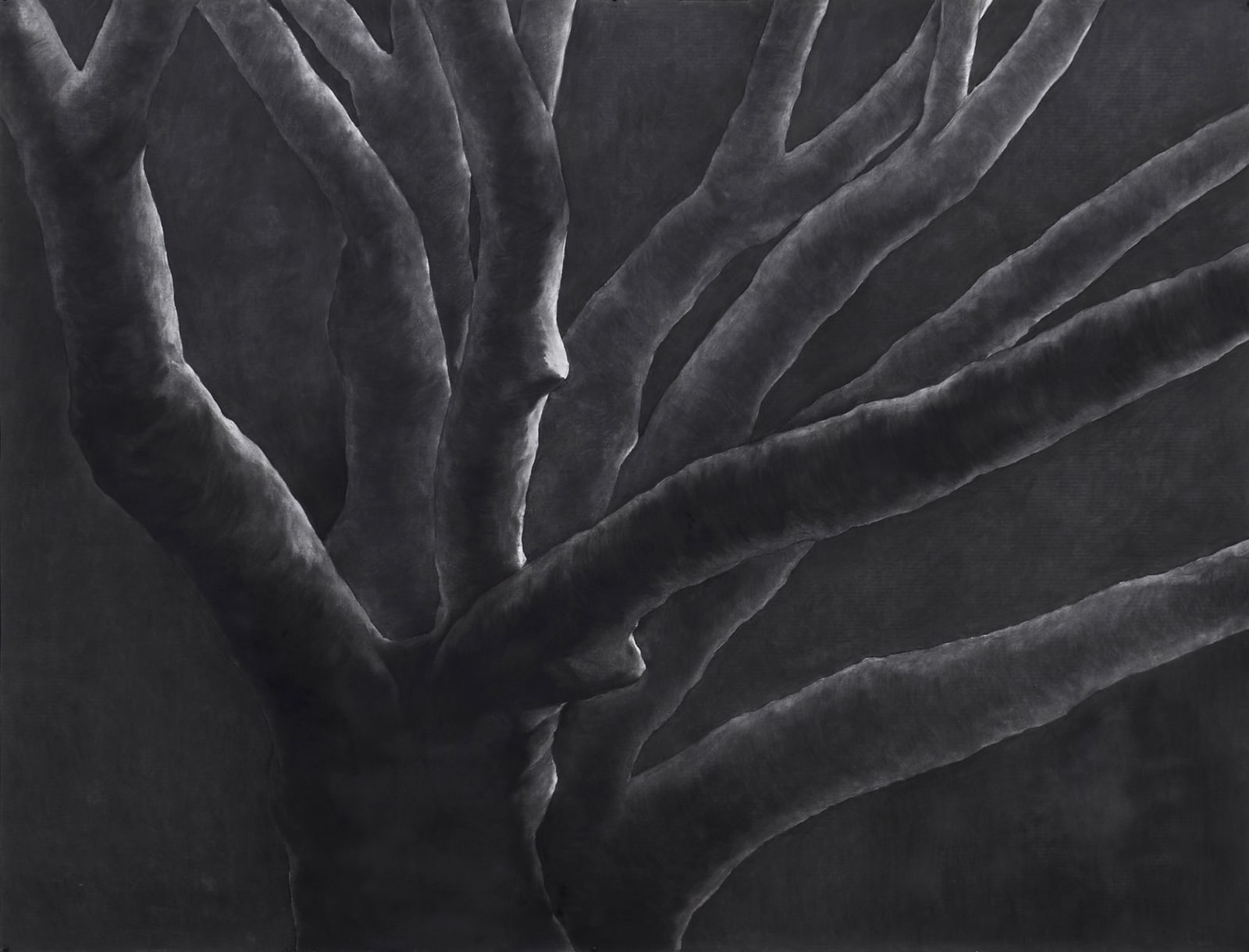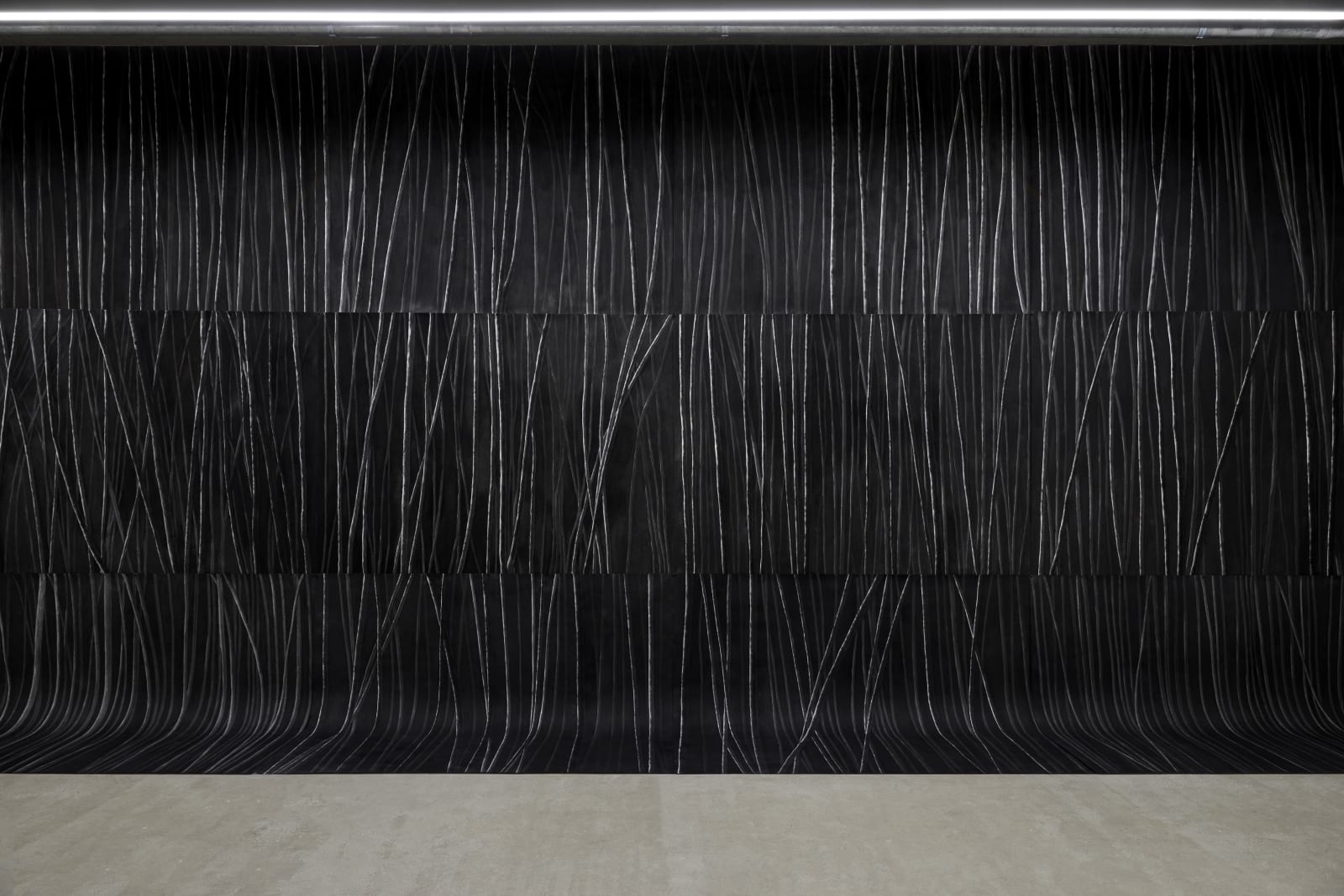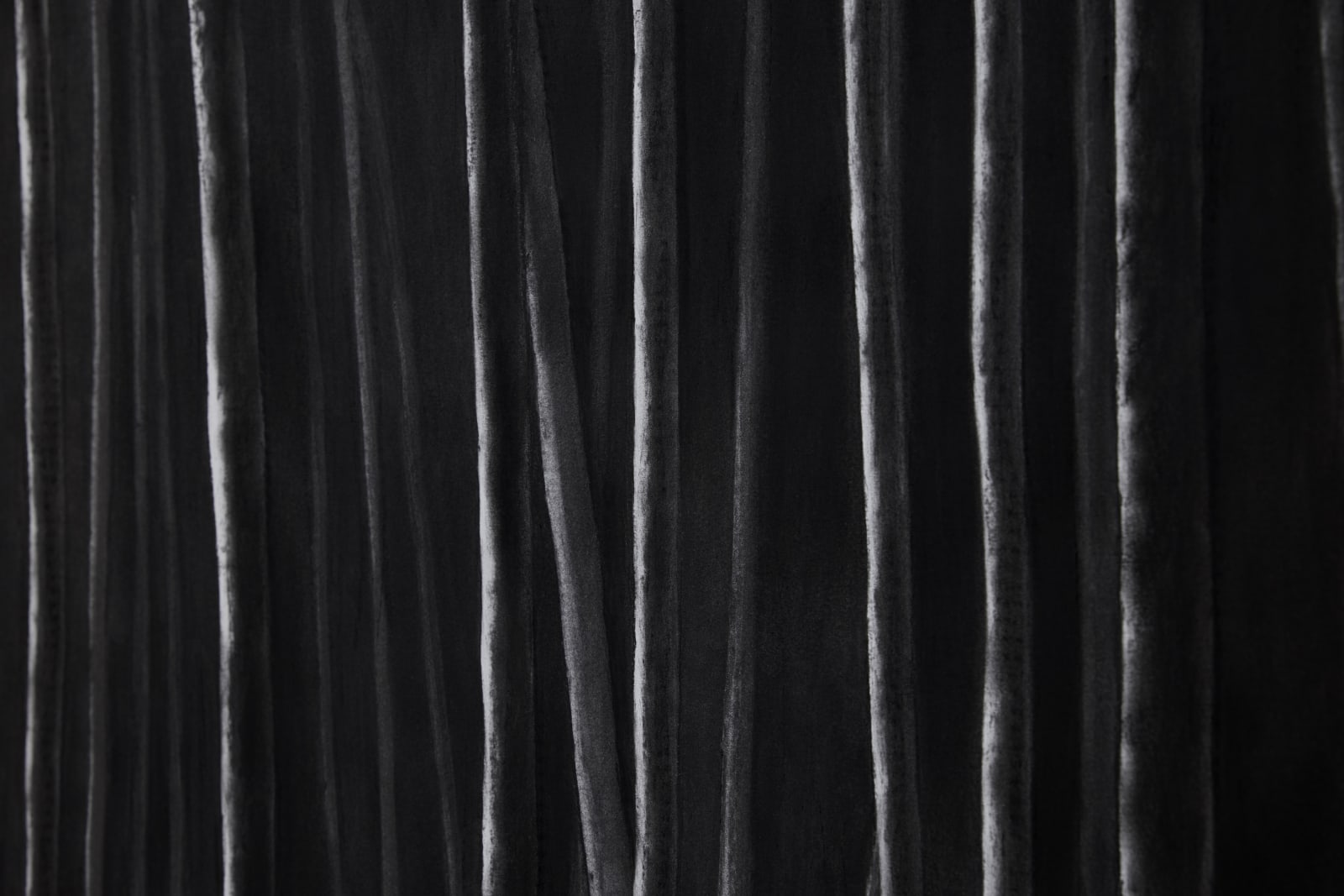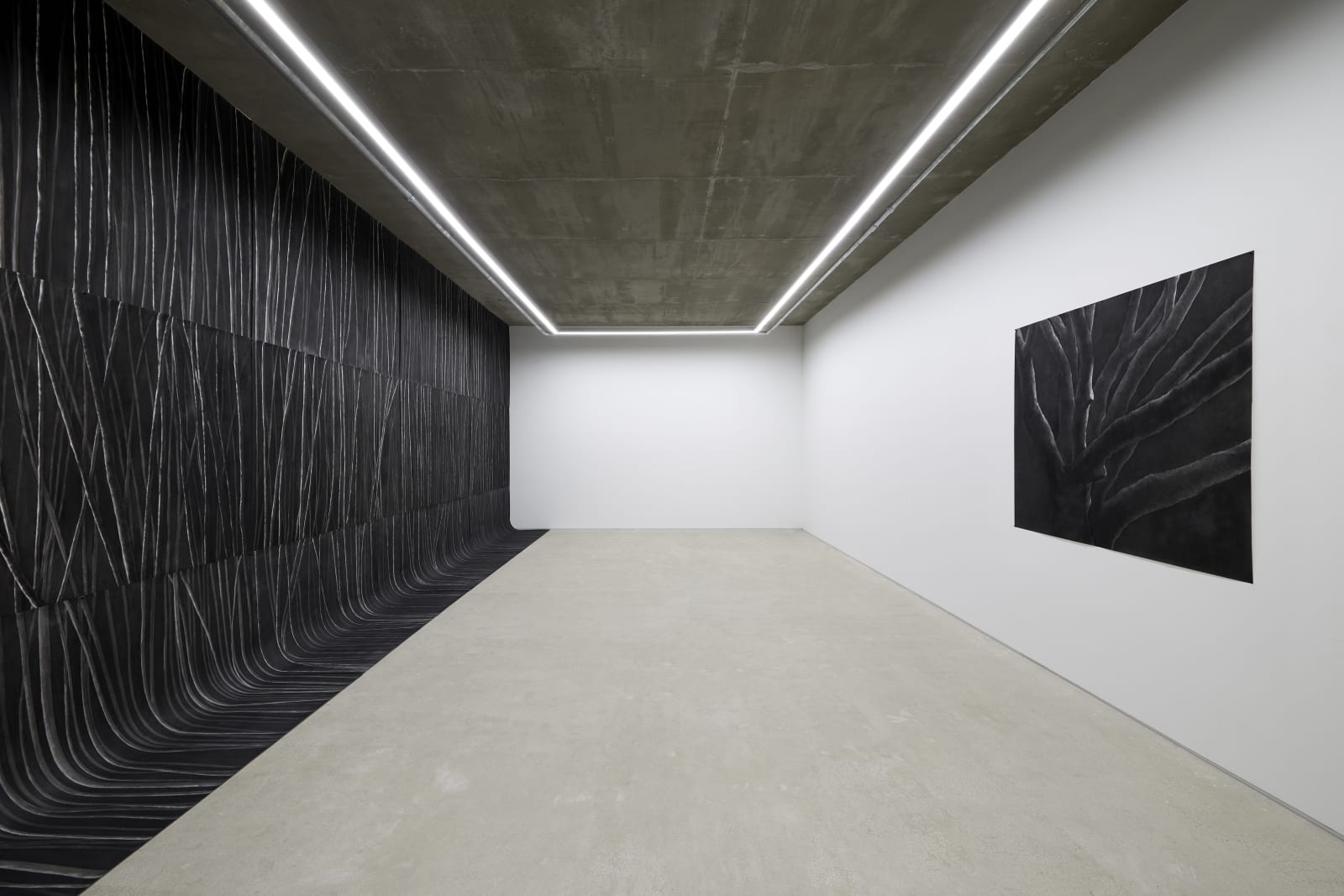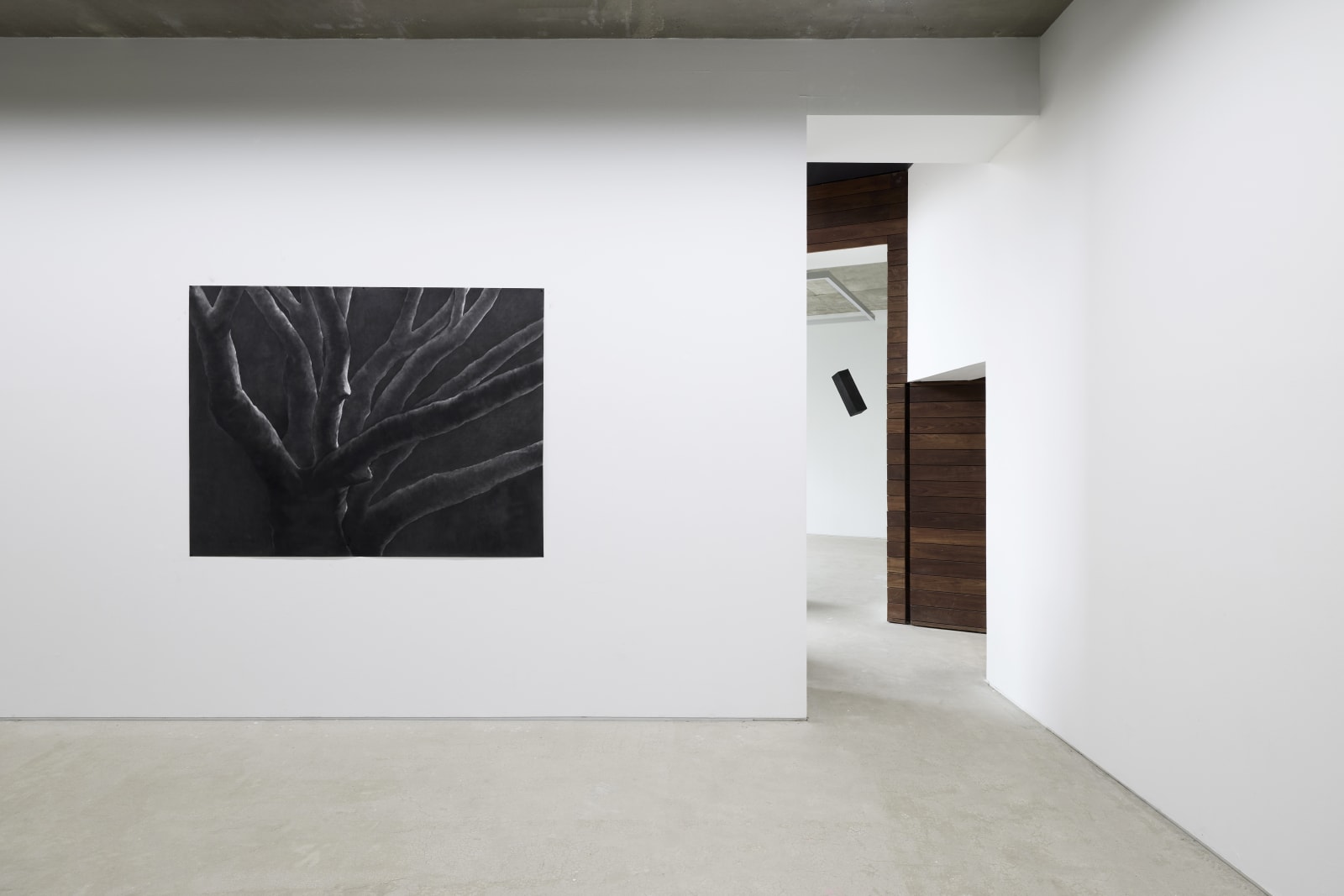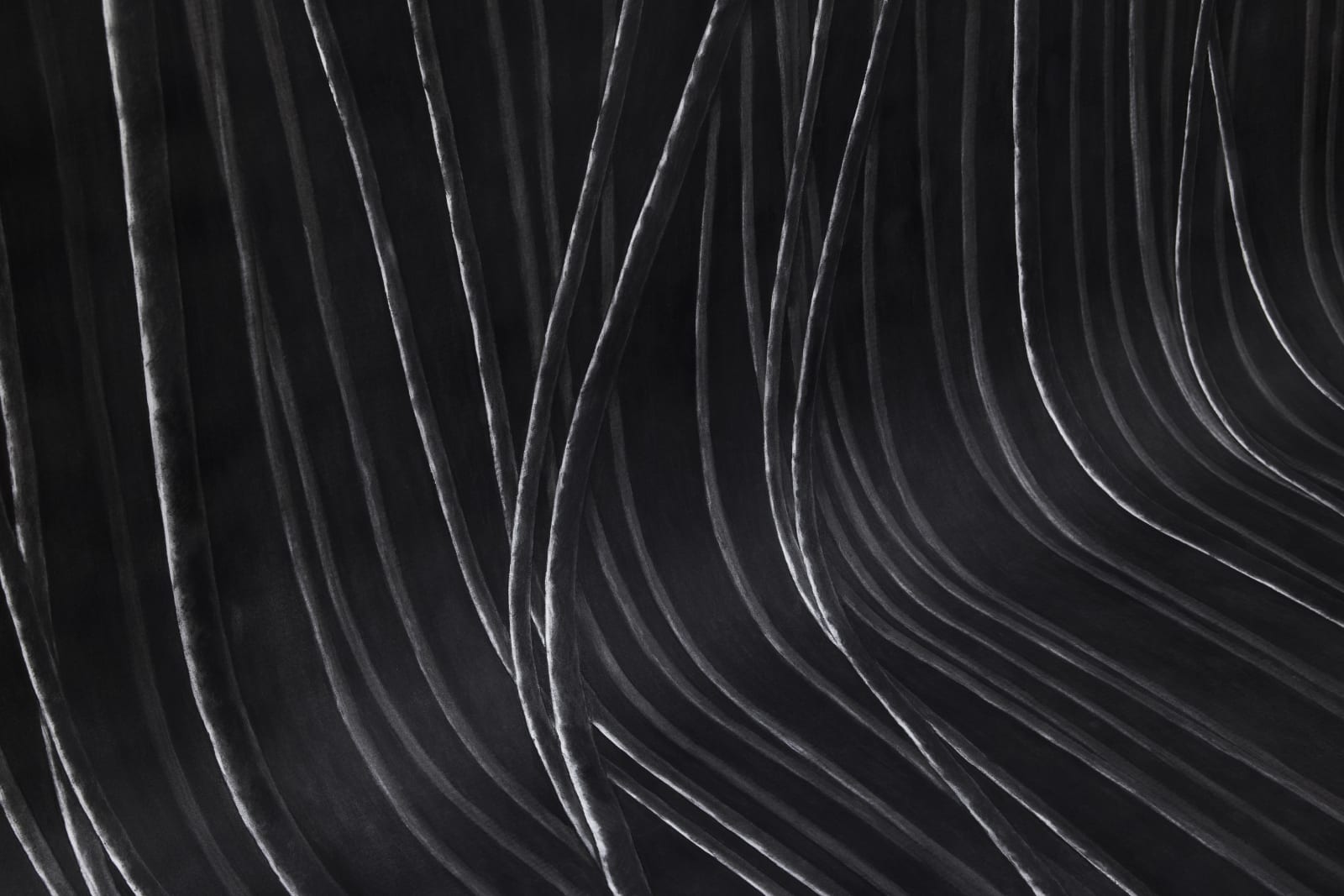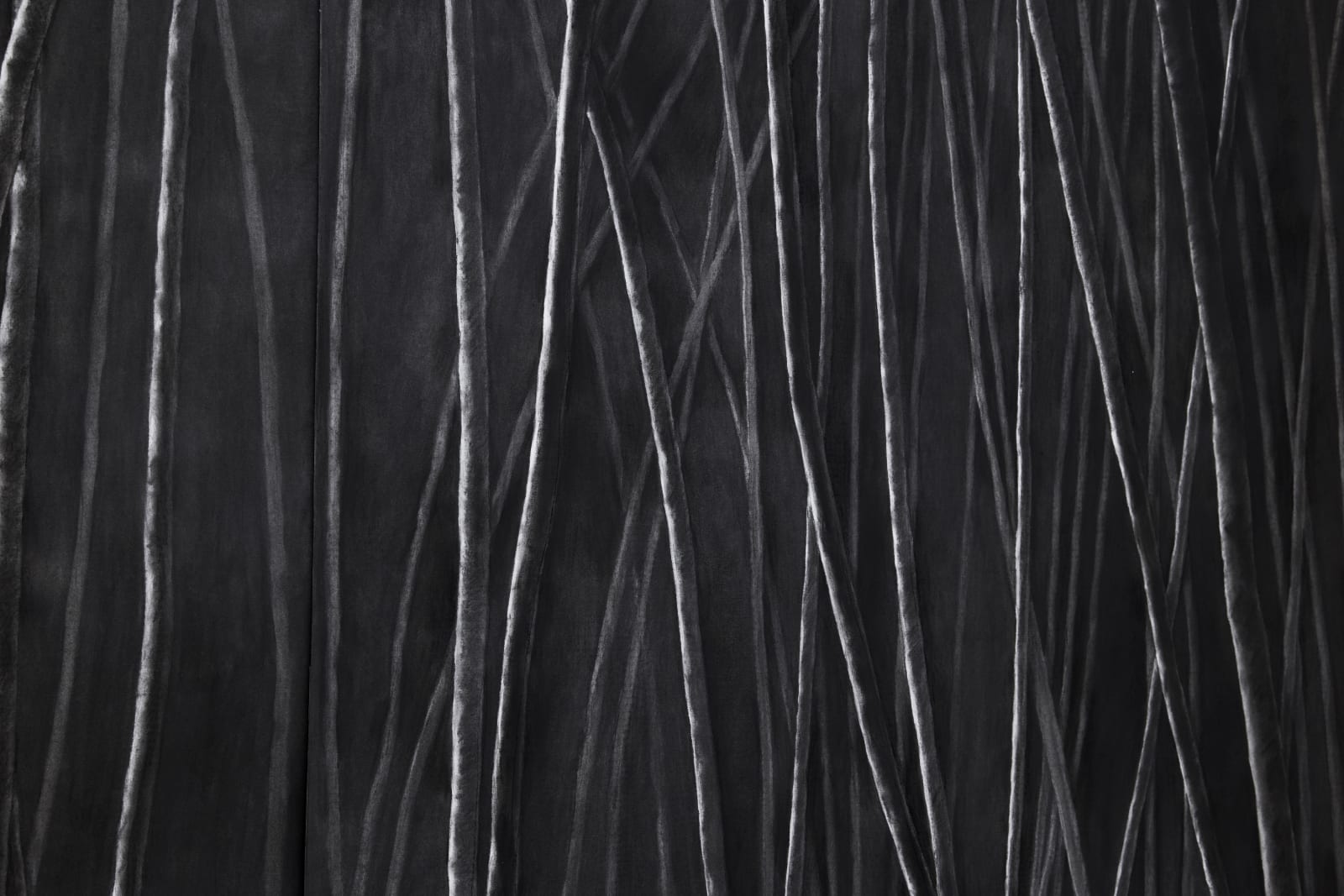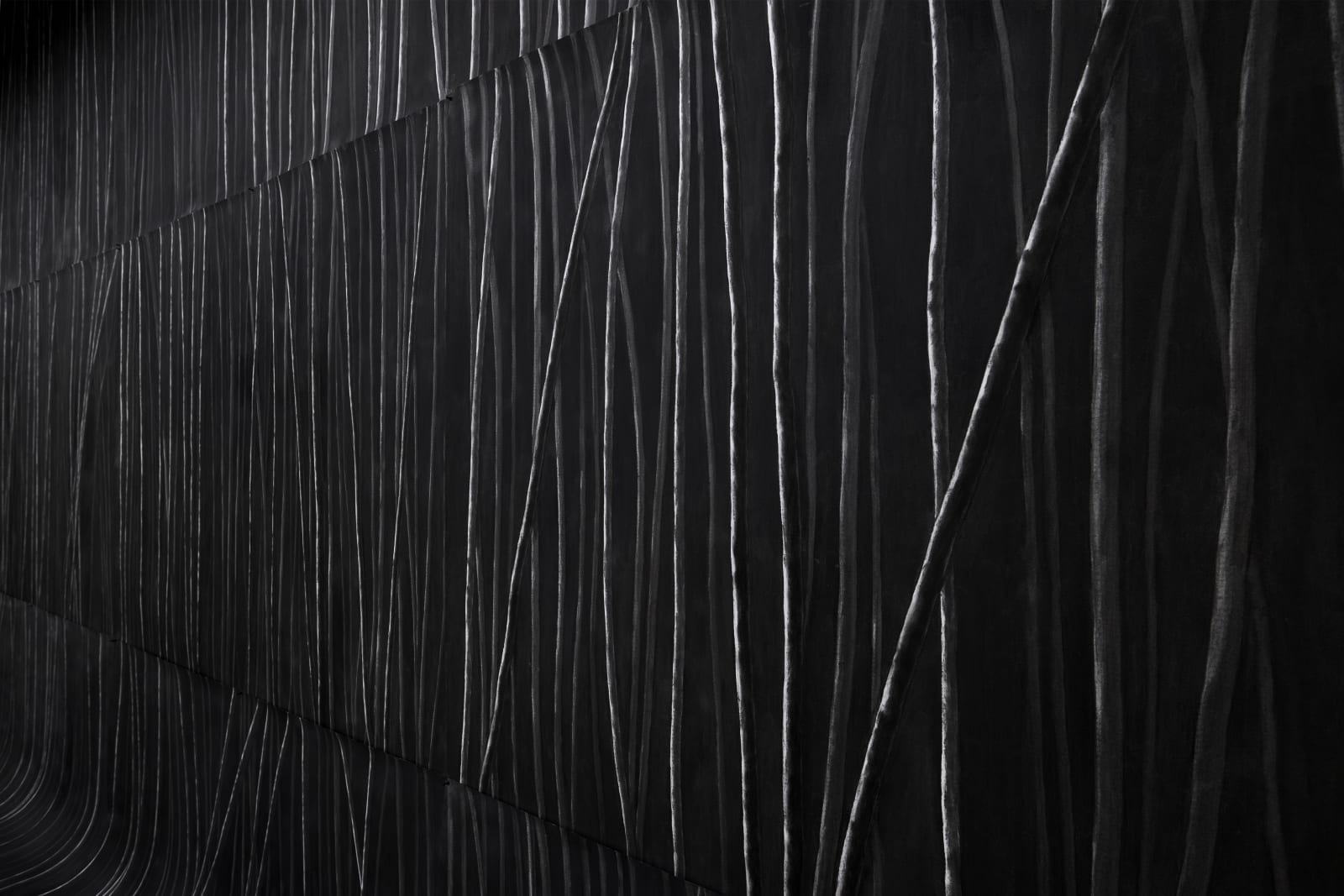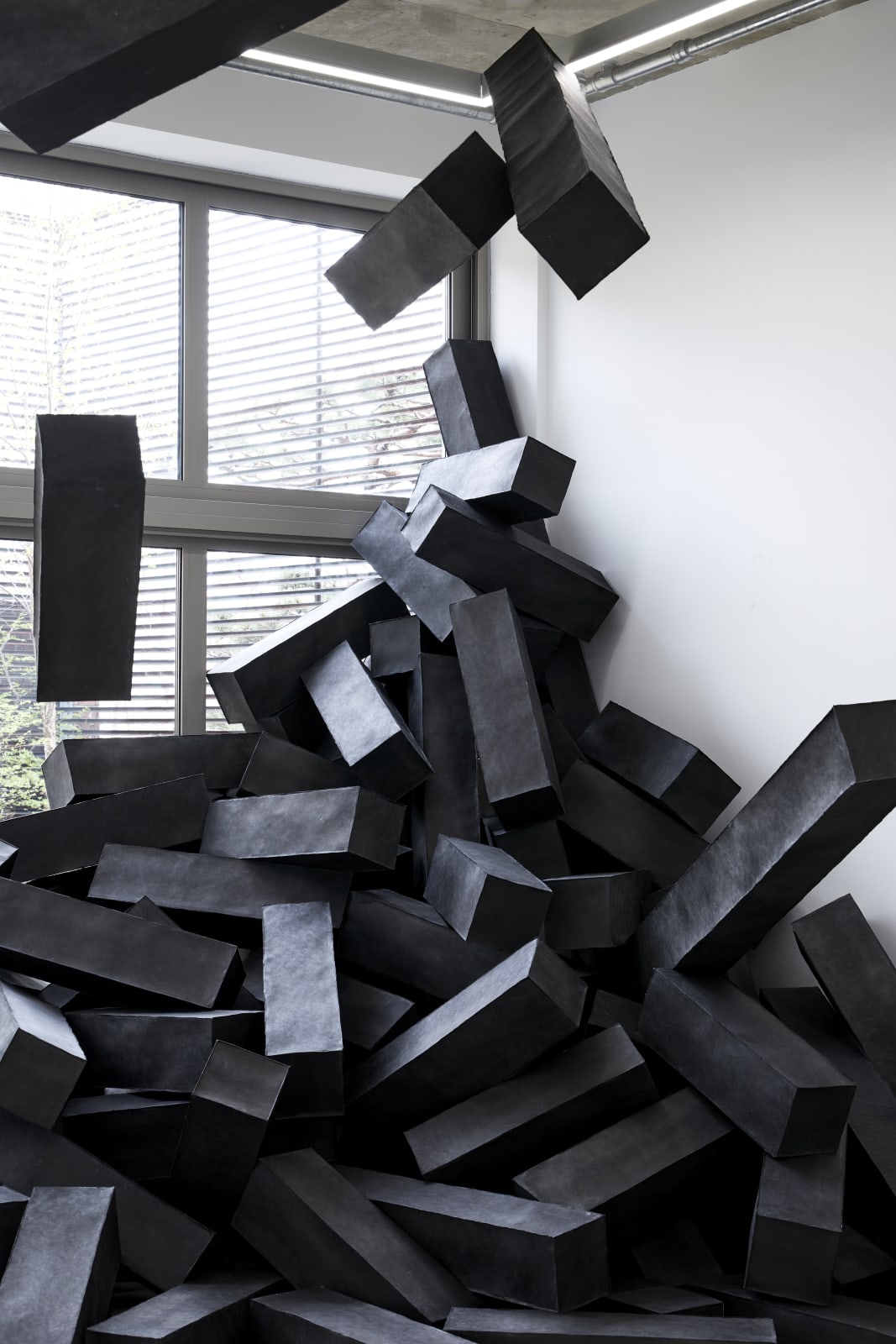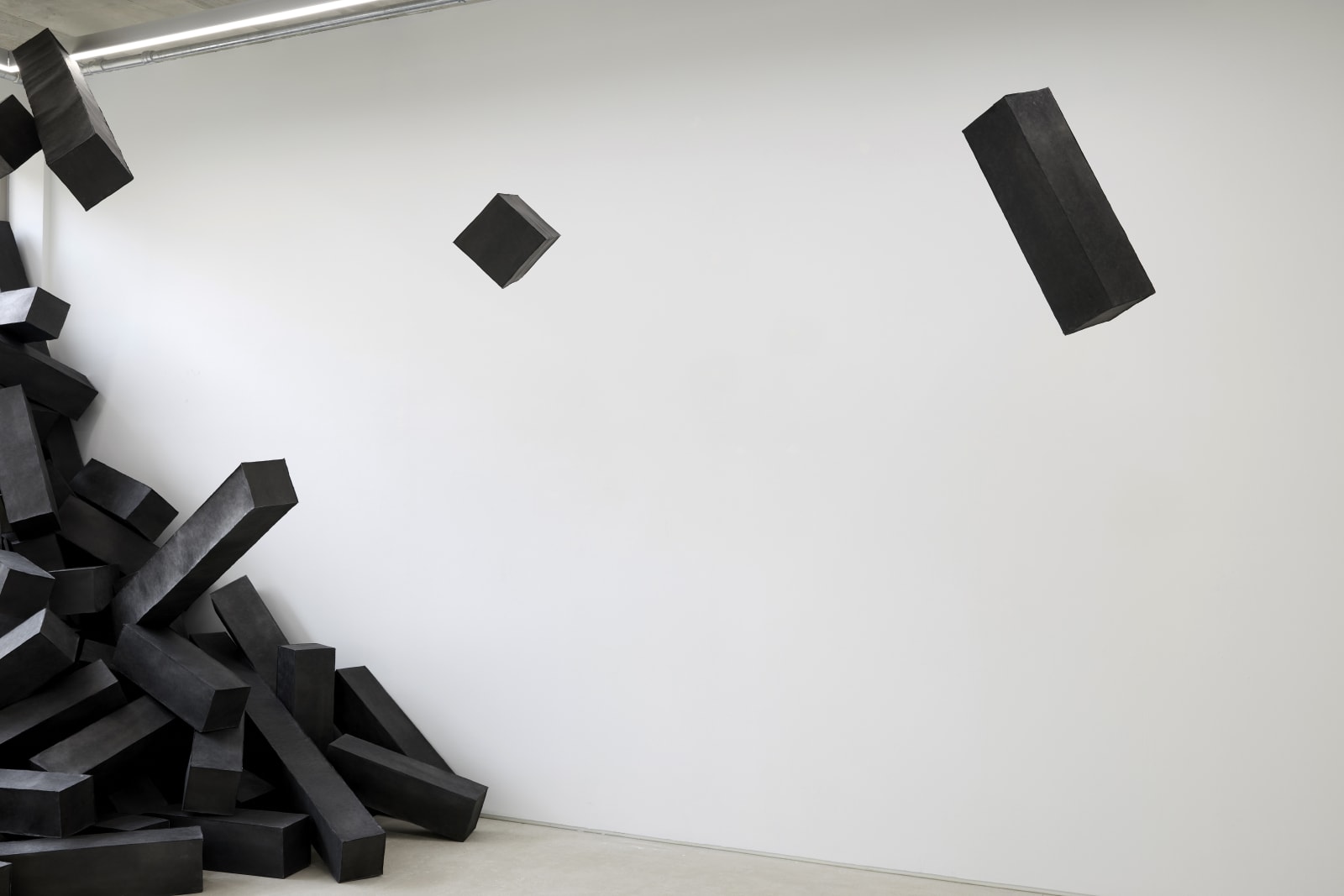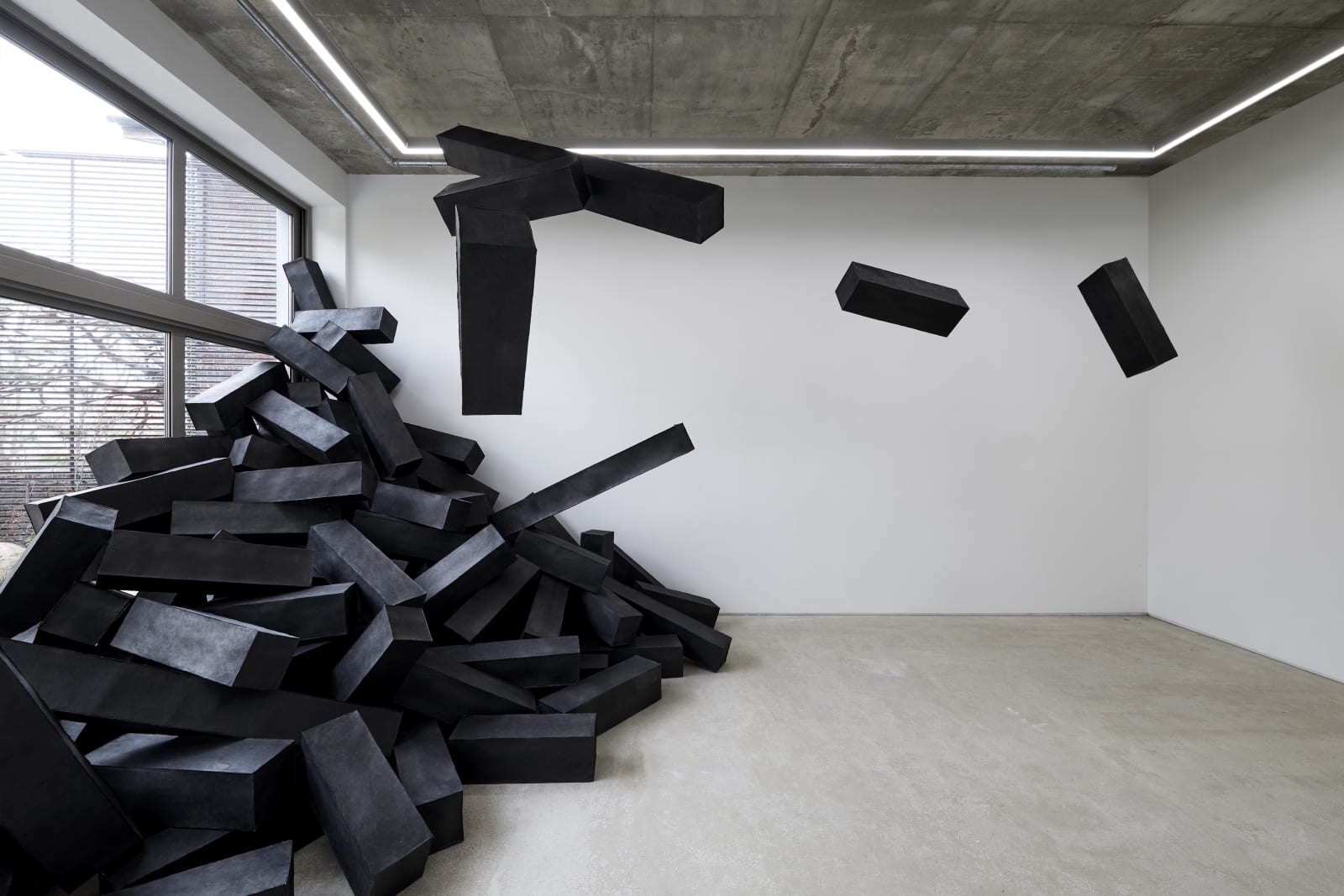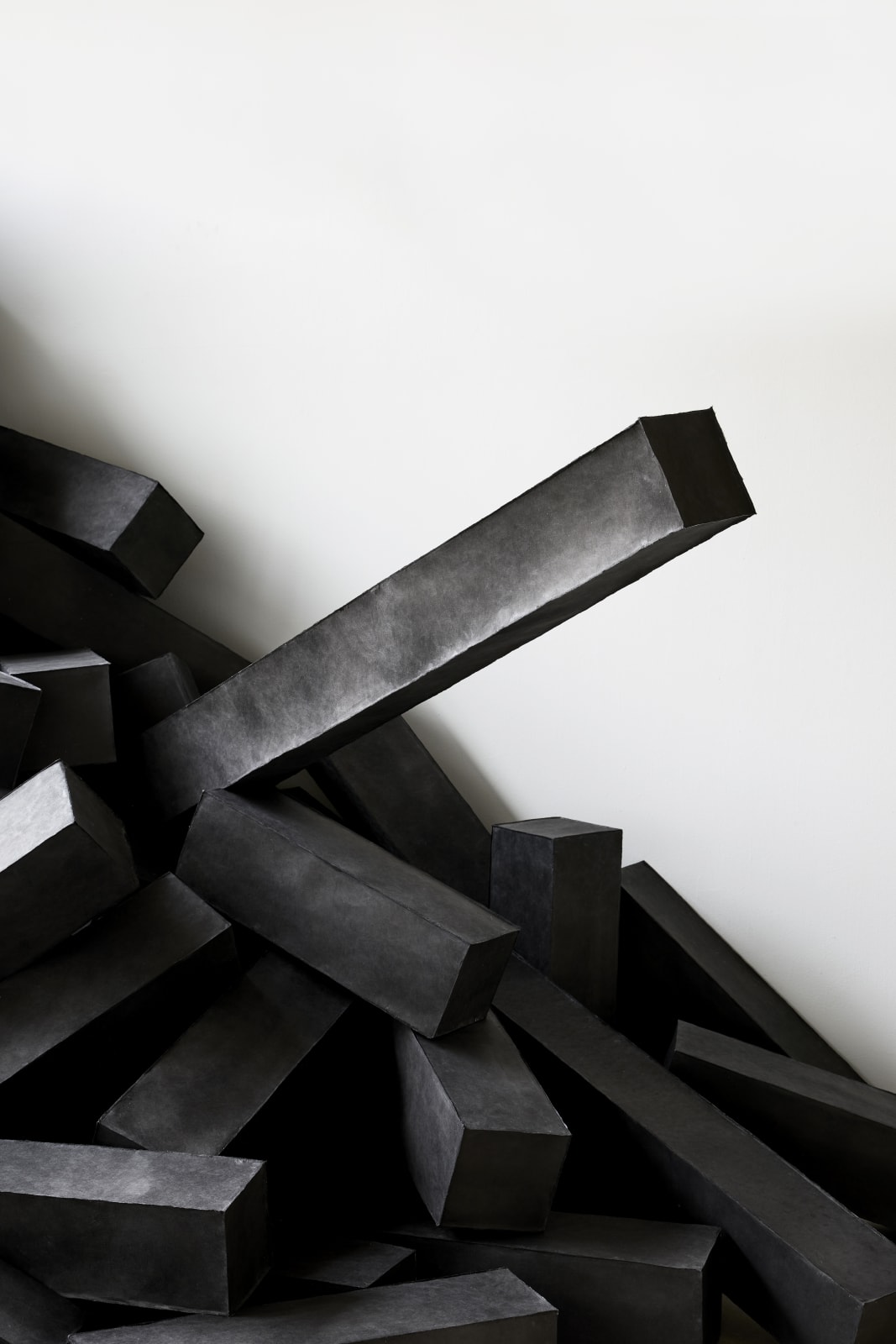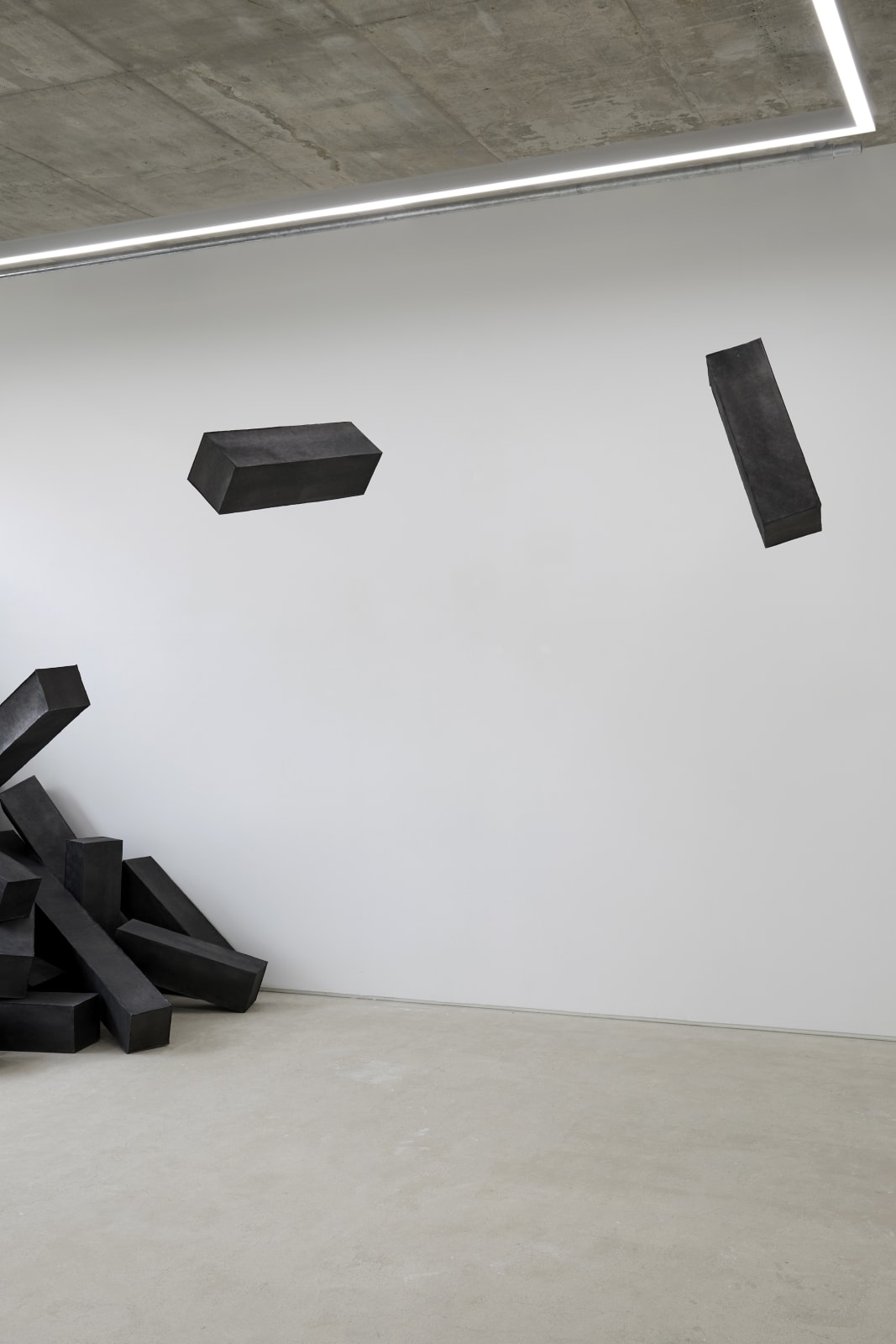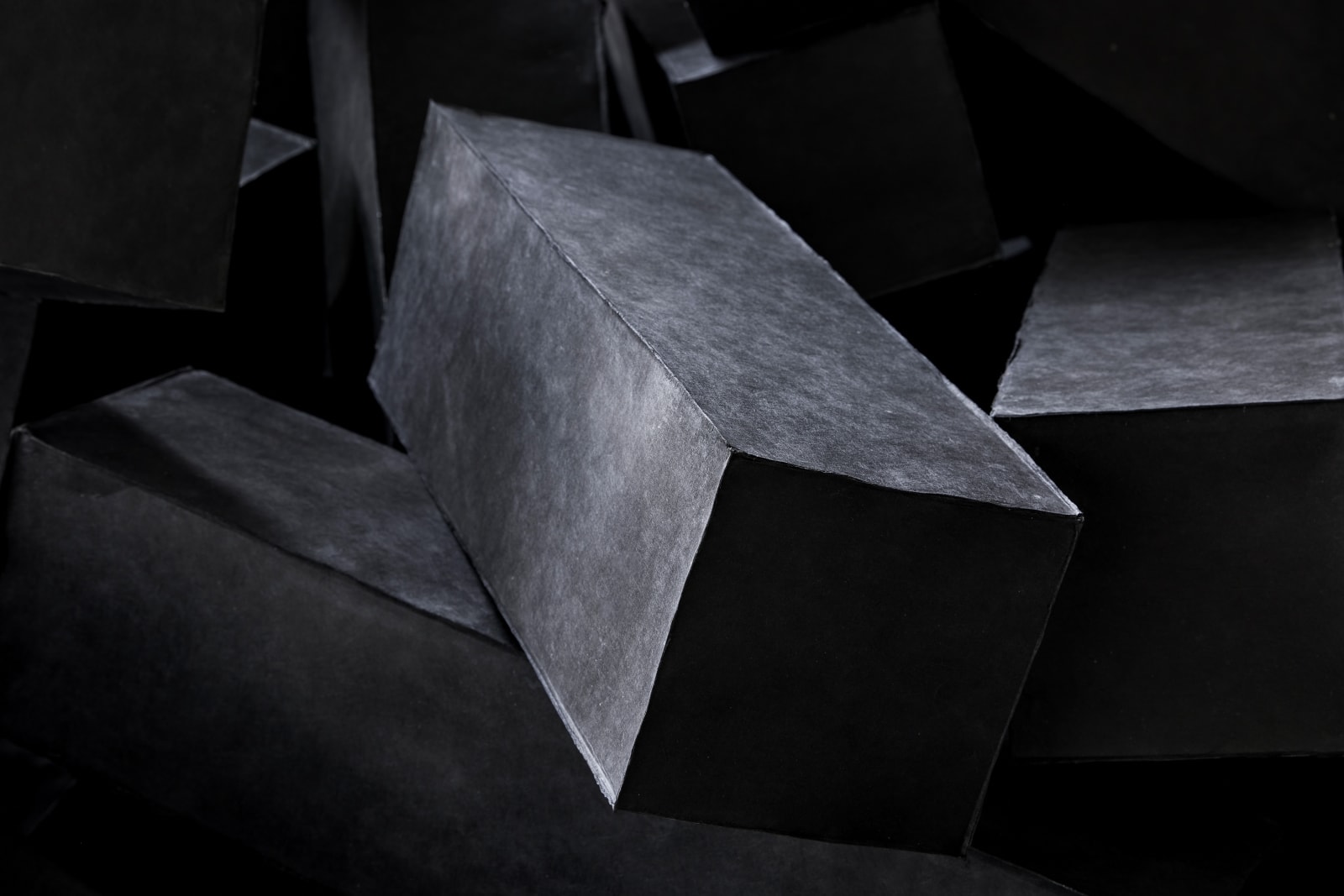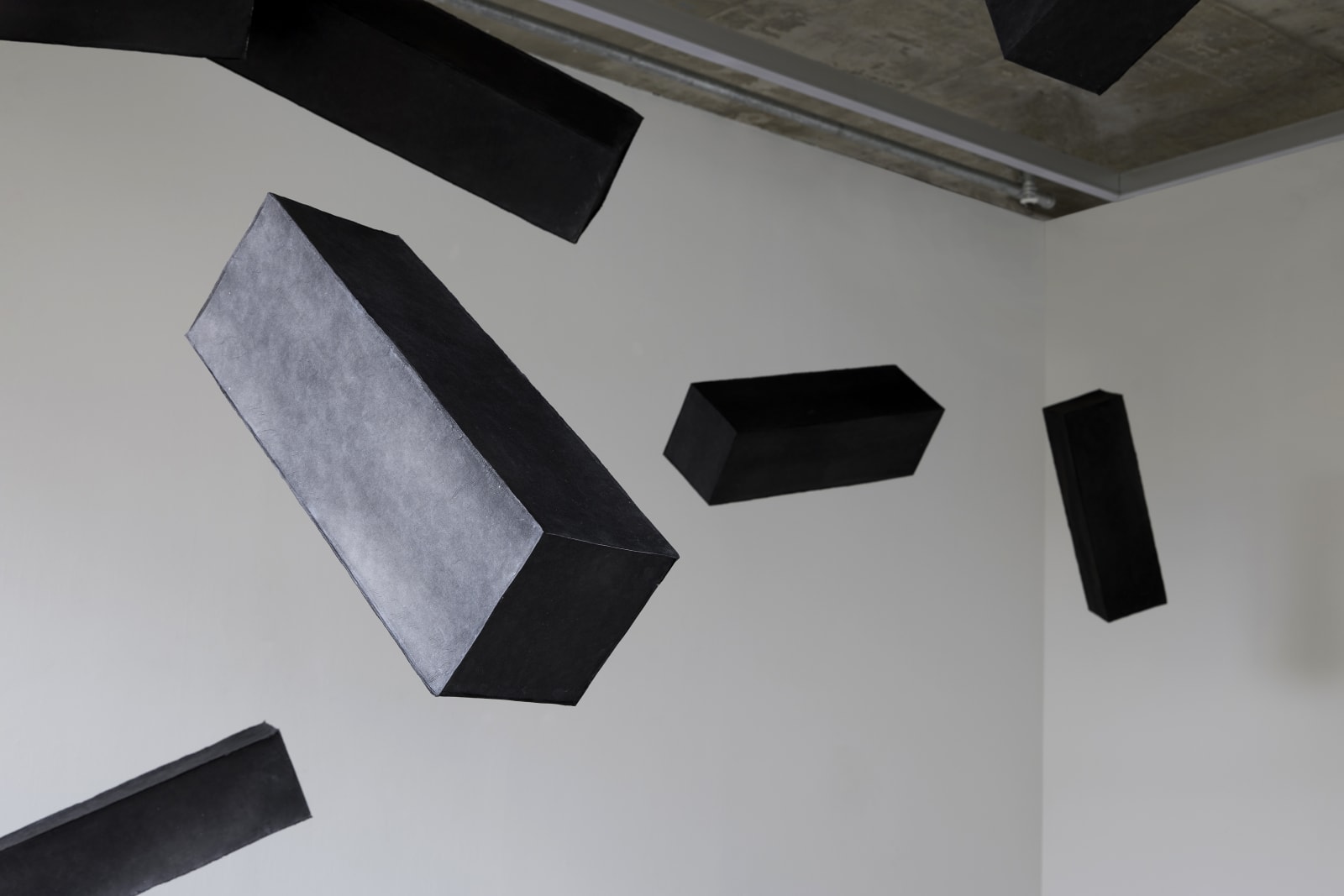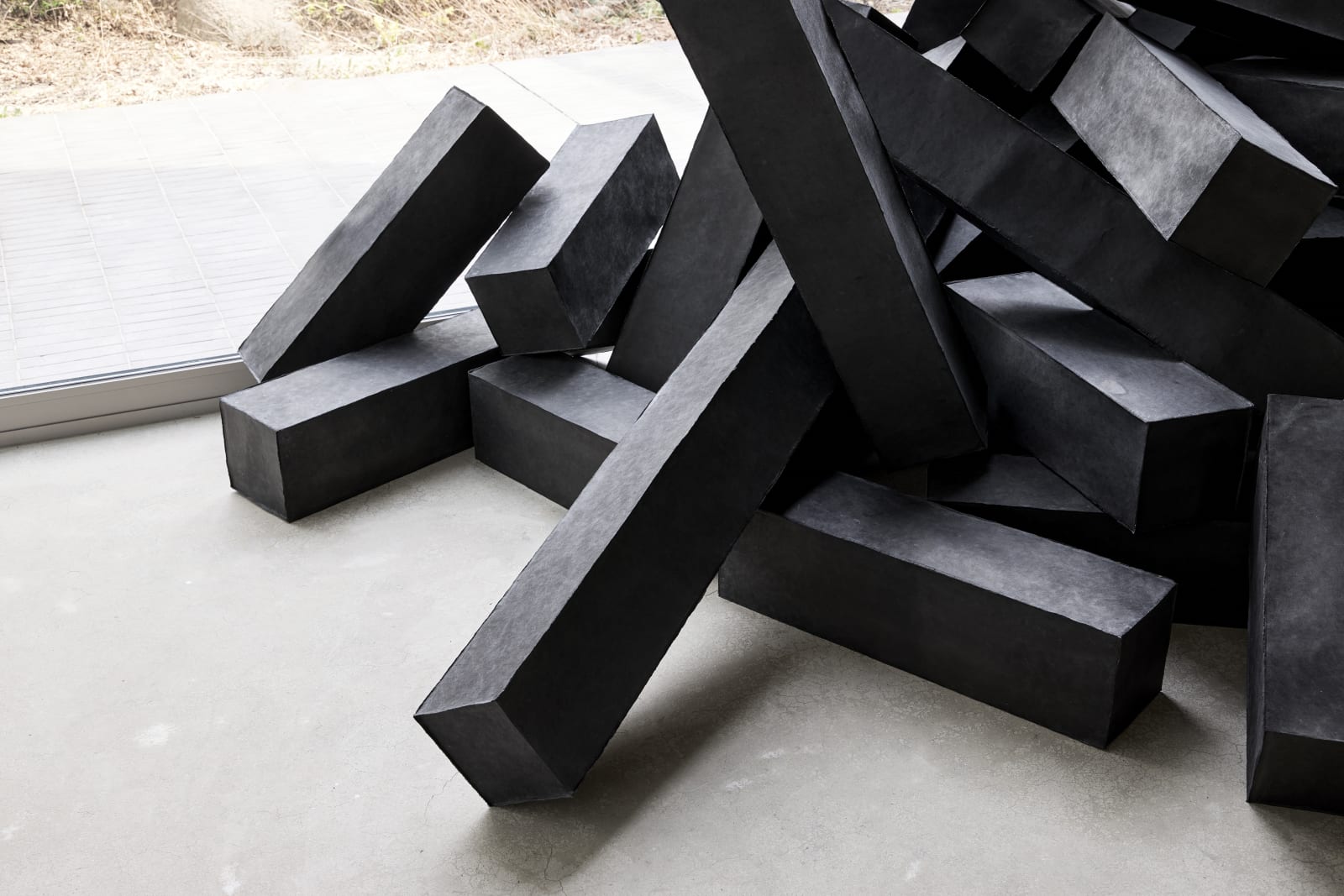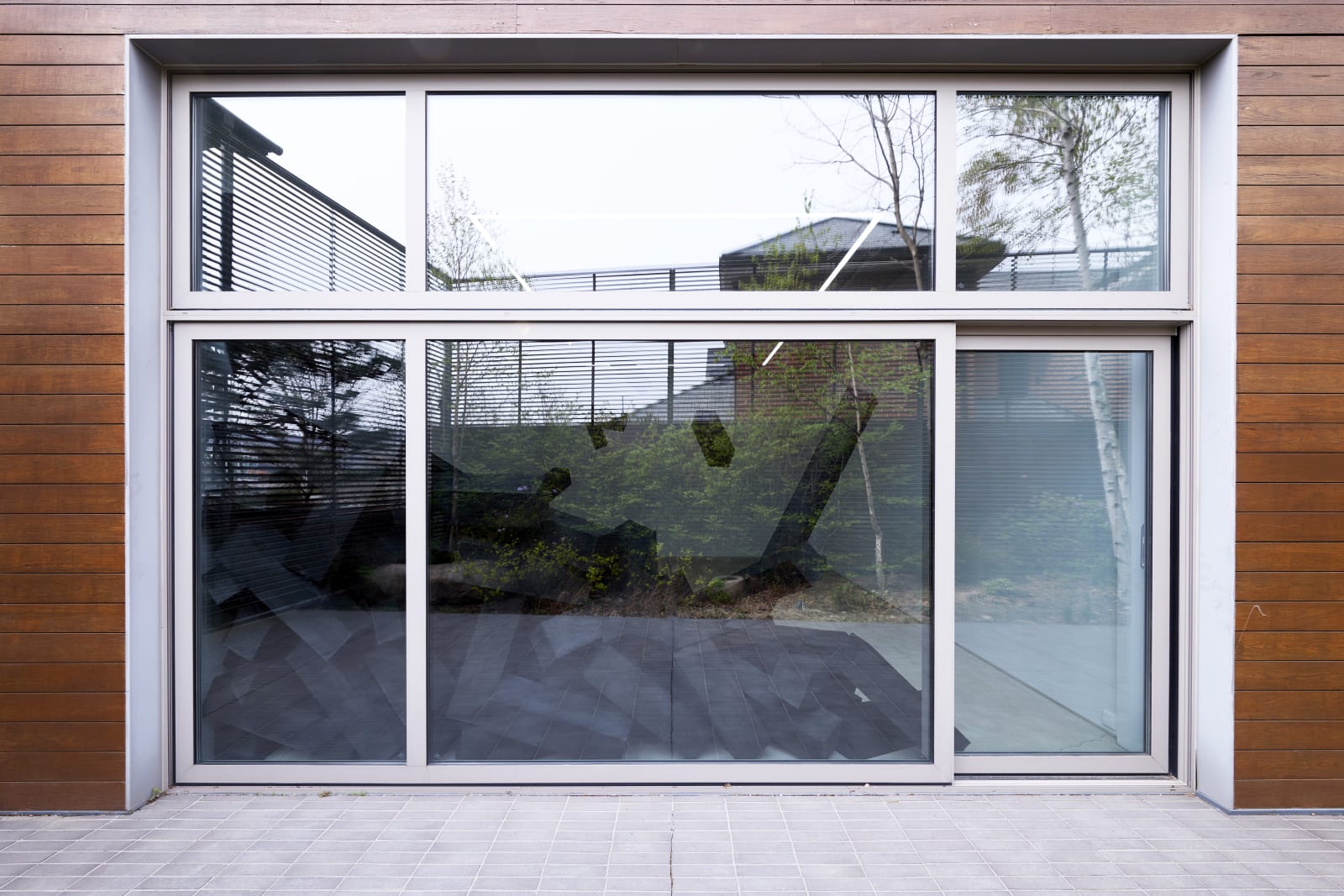최기석 Kiseog Choi
조각
무게가 사라진 자리, 구조만 남은 풍경, 물질 너머의 조각성. 최기석의 작업은 철과 종이라는 두 물질의 차이에서 출발해 그 다름이 하나의 이미지로서 작동하도록 구성된다. 자크 랑시에르(Jacques Rancière)의 견해를 빌려, 이미지란 더 이상 실재를 재현하거나 닮게 만든 것이 아닐 때, 이미지와 현실의 간극은 기존 규칙 바깥의 새로운 배치, 혹은 매체적 조건을 넘어서는 새로운 유사성의 자리를 연다. 최기석의 작업에 반복되는 패턴, 구조, 흔적은 이제 그러한 이미지-되기의 방편이라 할 수 있겠다. 그것들은 물질의 차이를 지우거나 감추지 않으면서도, 서로 다른 것들 사이에 공유되는 구조를 구성하고 감각을 매개하는 또 다른 조각적 질서를 형성한다.
철이라는 물질적 기반으로부터 이탈한 최기석의 조각은 먹이나 목탄을 머금은 종이로의 이행을 거쳐 다시 육면체 조각 군집과 우거진 나무 군락으로 향한다. 이번 전시에서 그는 철 대신 장지에 먹을 흡수시켜 표면을 구축한 뒤 이를 접고 세우고 엮어 형체를 만들었으며, 판화지를 펼쳐 회화적 방법론으로 지지체를 구현한 뒤 목탄을 누르고 긁어 마찰의 흔적을 남겼다. 그렇게 나타난 사각/원통 기둥, 파편화된 단면, 비정형적 틈은 그의 과거 철조각의 질료와 형상을 잔상처럼 불러내는 한편 명백히 다른 질서를 정립시킨다. 그 다름의 자리에, 비가시적인 차원에서 조각을 구성하는 원리, 즉 조각적 사유를 머금는 방식으로 이미지라는 확장된 영역이 놓인다. 철이 아닌, 철의 모방도 아닌, 철을 닮음이라는 전제 한 가지—재료의 미세한 차이나 변화에서 남은 감각적 흔적이 그의 작업에 부유하고 있다.
구멍
흥미롭게도 최기석은 종이로 만든 조각과 종이에 그린 그림을 과거 자신이 철조각에 남기던 구멍의 맥락과 겹쳐 놓는다. 물리적 부피와 밀도를 지닌 기둥들, 표면과 화면의 캄캄한 흔적들이 역설적으로 결여를 환기한다는 뜻일까? 아니다. 그보다는 사유가 아직 도달하지 못한 어떤 것을 예비한다는 의미에 가깝다. 그가 철조각에 내었던 구멍이 물질의 일부를 파내고 비운 결과였다면, 구멍으로서 기둥들은 그때 사라진 것의 형체를 다시 어떤 가시적인 원리로 되돌려 보게 한다. 현시의 감각을 경유하여 그 너머 혹은 그 이전을 드러내는 상상의 통로가 된 듯이.
이 지점에서 알랭 바디우(Alain Badiou)의 사유로 잠시 이동해 본다. 그는 저서 『검은색: 무색의 섬광들』에서 ‘블랙홀(black hole)’의 명명이 부정확하다고 짚는다. 이유인즉, 블랙홀은 별이 죽고나서 사라진 것이 아니라, 별이 핵으로 축소되어 그 속에 아무것도 빠져나가지 못하는 인력을 행사하며 모든 입자를 밀착시키는 것이기 때문이다. 그러니까 여기서 ‘구멍(hole)’은 관찰자의 활동과 관련한 인식에 해당하는 것이지, 실재에 있어서의 구멍이 아닌 것이다. 그런데 구멍 앞에 놓인 ‘검은(black)’은 인식에서 결여된 무언가를 검다고 부르며 사유에서 어떤 것도 결여되지 않도록 하는 은유로서, 구멍의 의미와 멀어진다(알랭 바디우, 『검은색: 무색의 섬광들』, 박성훈 옮김, 민음사, 2020, 94~98.).
아마도 최기석이 말하려던 구멍이 그런 것일 테다. 사라짐, 부재를 대변하는 언어를 지나, 사라진 것과 그것에 들러붙을 것들, 그래서 충만해질 가능성에 관한 사유로서 ‘검은’과 함께하는 ‘구멍’. 노트에 연필로 생각을 적다 검게 칠해 버리는 행위가 앞으로 그것에 열릴 잠재적 사유를 머금고 잠깐 동작을 멈춘 것이듯, 그가 일컫는 구멍은 새로운 이미지가 발생하고 뭉칠 장을 마련한다. 물질적인 개입에 앞서 이미지에 관한 사유를 통해 조각성으로의 진입을 이끄는 그러한 장을 말이다.
Sculpture
A place where weight has been lifted; a vista where only structure remains; sculpturality beyond the material. Kiseog Choi's work emerges from the difference between two materials—iron and paper—constructed so their distinctions operate as a unified image. Borrowing Jacques Rancière's perspective, what precisely are we being told, when it is said that there is no longer any reality, but only images? Or conversely, that there are no more images but only a reality incessantly representing itself to itself?[1] The gap between image and reality opens space for new arrangements outside existing rules, or new similarities that transcend medial conditions. The recurring patterns, structures, and traces in Choi's work may be vehicles for this image-becoming. Without erasing or concealing material differences, they form a shared structure between disparate elements and create an alternative sculptural order that mediates sensation.
Departing from the material foundation of iron, Choi's sculpture transitions through paper suffused with ink or charcoal and toward clusters of hexahedral forms and dense groves. In this exhibition, he uses jangji (cardboard-like of hanji, mulberry pulp paper) instead of iron, constructing surfaces saturated with ink, folded and erected into sculptural forms. He also uses printmaking paper, unfolded to create supports through painterly methodologies, pressed and scraped with charcoal to leave frictional traces. The resulting rectangular and cylindrical pillars, fragmented cross-sections, and indeterminate gaps evoke the material and form of his past iron sculptures like afterimages while establishing a distinctly different order. In such gaps lies an expanded realm of imagery as a vessel for sculptural thinking—the principle that constitutes sculpture in an invisible dimension. The liminal existence there is not iron itself, nor mimicry of iron, but a single premise of resemblance to iron—sensory traces remaining from subtle material differences and transformations.
Hole
Interestingly, Choi superimposes his paper sculptures and drawings with the context of holes he once left in his iron sculptures. Do the pillars with physically tangible volume and density—the dark traces on surfaces and picture planes—paradoxically evoke absence? No. Rather, they anticipate something that awareness has not yet reached. If the holes he made in iron sculptures resulted from excavating and emptying part of the material, then these pillars as holes reveal what has previously disappeared through some visible principle—as if they had become imaginative holes that reveal what lies beyond or before through the present senses.
We briefly turn to Alain Badiou (2018)[2], where the author points out black hole as a misnomer. A black hole is not something that disappeared after a star died, but rather a star reduced to its core, exerting gravity that prevents anything from escaping and compressing all particles together. But even though it’s a hole in perception, and hence in relation to the presumed activity of a star detector in a galaxy, it is in no way a hole in the real.
This is likely the kind of hole Choi means to address. Beyond the utterance-horizon of nothingness (the hole) and toward black super-reality (of what has disappeared, what it may agglutinate with its tremendous attraction). The "hole" accompanied by "black" becomes a meditation on presence through absence, a paradoxical space where fullness emerges precisely from what appears to be void.
Just as penciling thoughts and blackening over the notes constitutes a tenuto of potential thought—a momentary suspension rather than erasure—the holes in Choi's works function as gravitational fields where new images emerge and coalesce. They create the contemplative horizon beyond which sculpturality manifests through thinking about images before material intervention occurs.
In this profound interstitial space, absence becomes generative rather than reductive. The hole transforms into a carefully prepared field of possibility that precedes and makes possible the material manifestation of artistic thought, connecting the invisible dimension of conceptual understanding with the tangible realm of sculptural presence.





